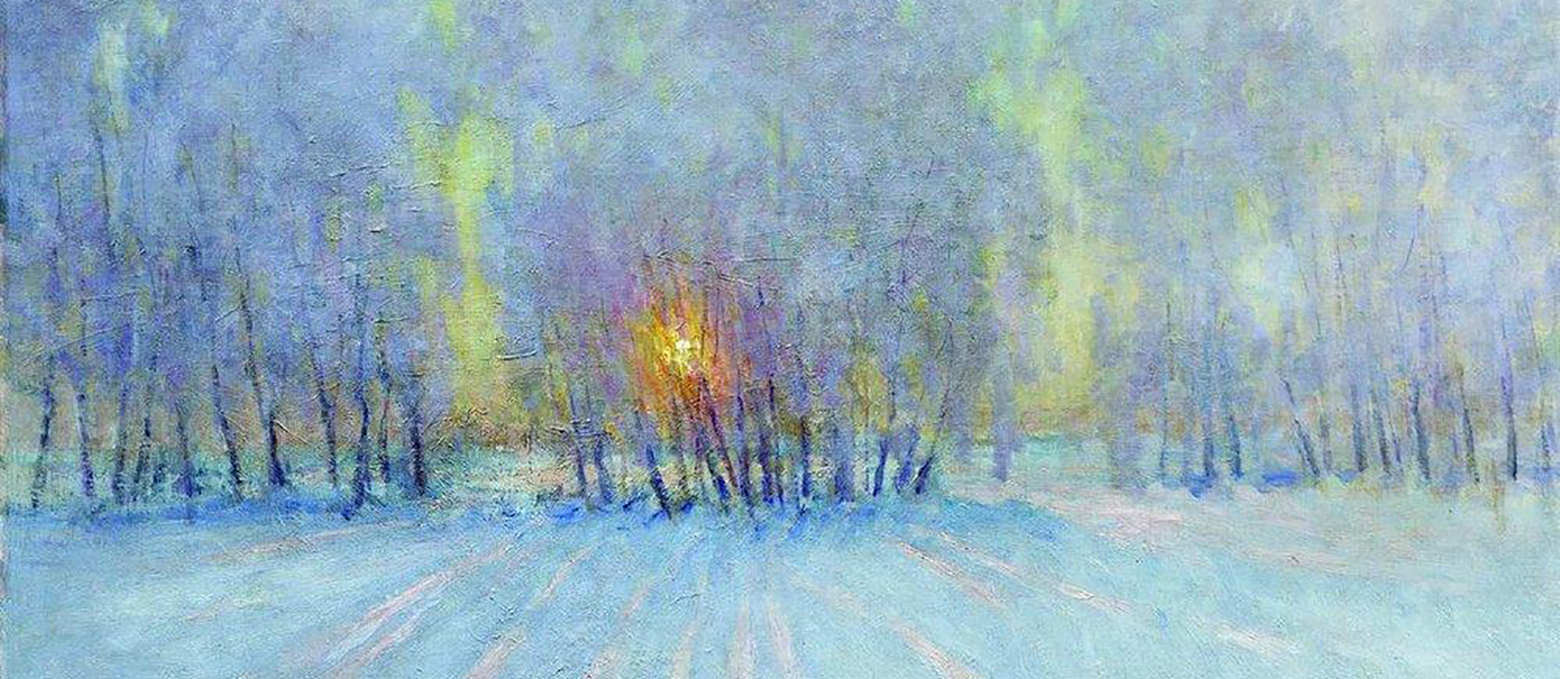

Hrabar Ihor
1871 – 1960An artist, art historian, architect, pedagogue
- Biography
- Portfolio of works
- Photo archive
- Bibliography
Biography
One of the founders of museum studies, restoration and art preservation activities in the USSR, academician of the Academy of Sciences of the USSR (1943), academician of the Academy of Arts of the USSR (1947), People's Artist of the USSR (1956).
Ihor Hrabar was born on 25 March 1871 in Budapest (Austria-Hungary) in the family of the member of the Austrian Parliament Emanuil Hrabar. Igor's mother Olha, like his grandfather Adolf Dobrianskyi, was engaged in social and political as well as educational activities, spreading Slavophil ideas in Transcarpathia and Halychyna, that contradicted to the policy of the Austro-Hungarian monarchy. Rescuing from persecution, the family was forced to move from Subcarpathian Russia and settled in the Russian Empire. Ihor Hrabar was nine years old at that time.
From 1882 to 1889, the young man was studying at the Moscow Lyceum graduating with honours. Fascinated by art, the future artist often visited exhibitions in Moscow and spent many hours painting. Consequently, until 1893, he studied at the St. Petersburg University at the two faculties: law and historical-philological.
A cherished dream of a certified lawyer – painting – came true at the age of 23. He was enrolled to the Imperial Academy of Arts in St. Petersburg studying at the famous masters from 1894 to 1898.
In the same period, the artist began to get acquainted with the Western European painting and architecture – the art of French artists and masters of the Renaissance. From 1895 to 1900, he repeatedly visited the world-famous cultural centres: Berlin, Paris, Venice, Florence, Naples and Rome. Since 1896, he was studying in Munich and teaching at the art school.
In 1901, the artist returned to Russia and began to actively paint. His picturesque landscapes, still lifes, imbued with the spirit of impressionism, luminous intrinsic light. The artist enjoyed the frosty winter most of all. On the artist’s canvases, the air is particularly transparent and the sun's rays are playing on the trees’ branches, powdered with a filigree hoarfrost. The subtle vision and mastery of the artist made it possible to depict white snow in hundreds of shades, and cosy, shady corners – surprisingly elegant.
1902-1909 – a period of the active exhibition activity in Russia and Europe. Hrabar’s works were exhibited at the World Exhibition in Rome. At the same time, he established the entity "Contemporary Art" and organized numerous exhibitions, including one of Japanese painting. At that time, the artist went on a tour to the North of Russia to study ancient wooden architecture.
The irrepressible nature of Ihor Hrabar's demanded vigorous actions and new experiences. He tried himself as an art critic, publishing essays in specialized art publications. And in 1906, he published a series of monographs about outstanding artists I. Levitan and V. Sierov. Ihor Hrabar became the creator of the first scientific five-volumes "History of Russian Art" (published in 1909-1914, new edition – 1956-1969) included a section on the "Ukrainian Baroque". It laid the foundations for the scientific principles of art studies and systematic analysis of the art history.
From 1913 to 1925, Hrabar was the Director of the Tretyakov Art Gallery. He decided to conduct a full inventory of the gallery's museum fund with a detailed description and photographing of each exhibit, which was unprecedented since no one before him had done it. In 1917, the first catalogue of the complete collection of art works was published.
In 1918, Ihor Hrabar founded the State Central Restoration Studios, carrying out research and restoration works of numerous art and architecture monuments, including the Kremlin. For the next ten years, Hrabar actively visited European countries, the United States, organizing exhibitions and presenting art. During 1926-1930, he was the editor of the Department of Fine Arts of the Great Soviet Encyclopaedia.
In the 1930s, the artist returned to painting. In a realistic manner, he created portraits characterized by a combination of technical virtuosity and profound psychological expressiveness. He created a series of portraits of the prominent academics of the Academy of Sciences (1935), cultural and art figures. In those years, the artist could not deny the state orders. He created genre scenes, for example, "V. Lenin in his office in the Kremlin" (1933), "Peasants at the audience with V. Lenin" (1938). Such works fulfilled a certain role of a talisman at that time.
The artists paid much attention to scientific, research and pedagogical work in the field of culture and art. He was a professor at the Moscow University, after that the director of the Moscow Art Institute named after V. Surikov, the director of the Institute of Art History of the USSR Academy of Sciences, a full member of the Academy of Sciences of the USSR and the Academy of Arts.
Ihor Hrabar himself described the influence of art on his own destiny: "Art, art, art. Since my childhood, for me, it has been almost the only source of joy and sorrow, rise and suffering, admiration and indignation, the only true meaning of life."
The artist died at the age of 90, on 16 May 1960 in Moscow. The phenomenal diligence allowed him to create and be active until his last breath. This outstanding, multifaceted person was able to start and implement a lot of ideas that would be enough for several lives.
Ihor Hrabar's paintings are kept in numerous museums of the post-Soviet space, the most famous of which are the Russian Museum (St. Petersburg) and the Tretyakov Art Gallery (Moscow). His works are also included in the permanent exposition of the Transcarpathian Regional Museum named after Yosyp Bokshai (Uzhhorod).
Liudmyla Kozlovska
Portfolio of works
© Hrabar Ihor



























© Hrabar Ihor
Matching content source: photos of the art works are taken from public sources
Photo archive
Sorry, we did not find anything
Bibliography
- Biography
- Portfolio of works
- Photo archive
- Bibliography



